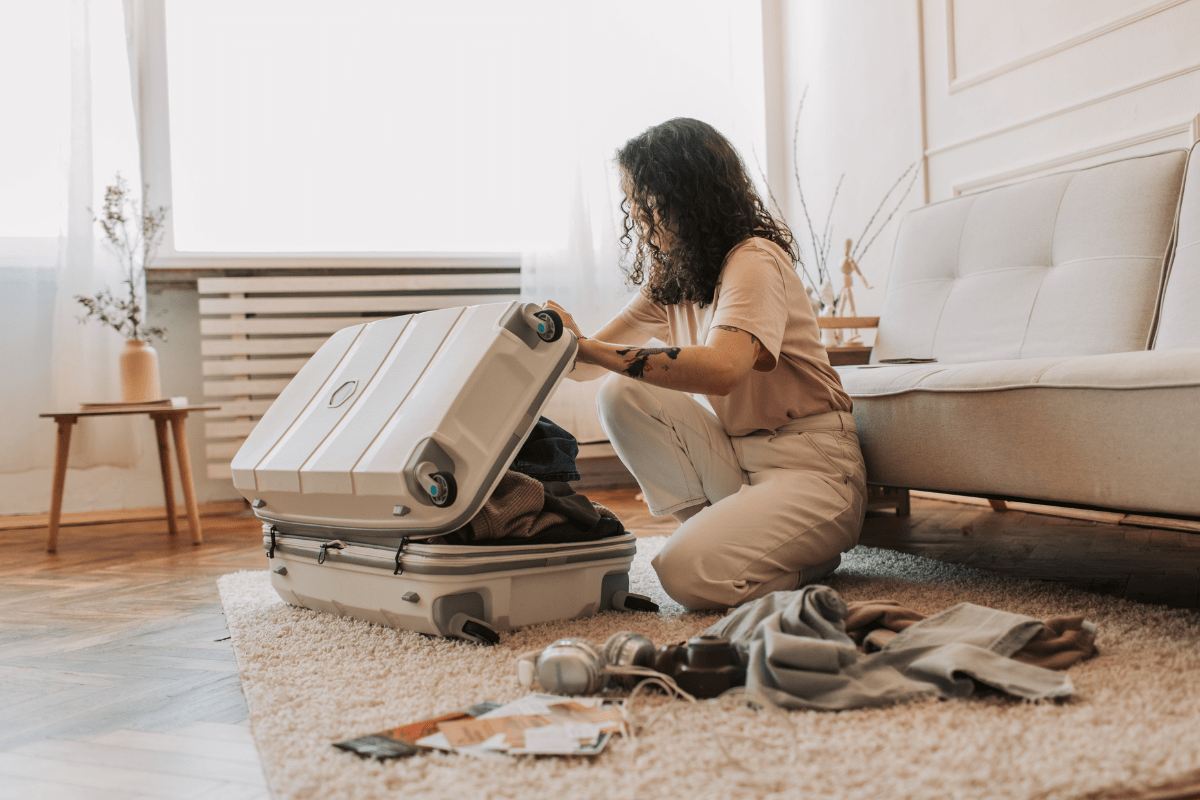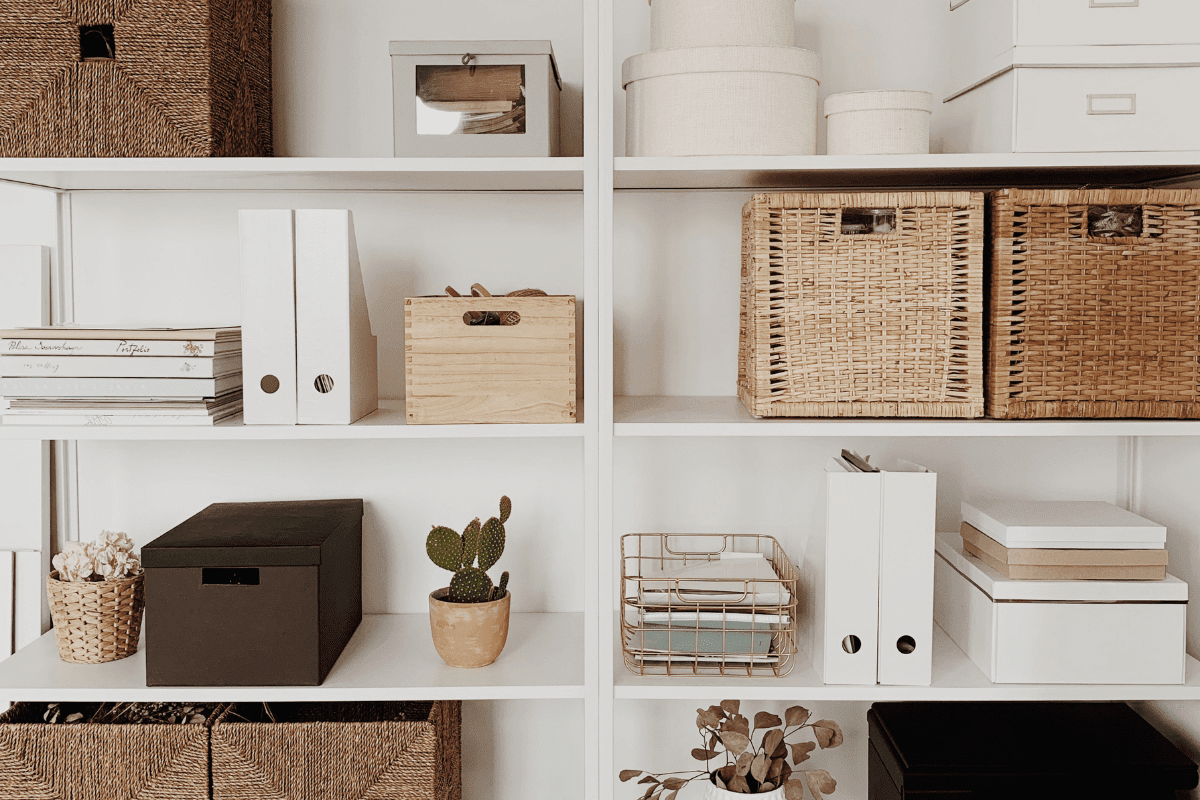Let's be honest: most of us are terrible at packing. We either stuff our suitcases like we're moving permanently to Mars, or we arrive at our destination missing half the essentials and wondering why we brought four identical black t-shirts.
The good news? There's actual science behind smart packing, and once you know the tricks, you'll never be that person frantically sitting on your suitcase trying to make it zip again.
The brutal truth about baggage fees
Here's a wake-up call that might hurt your wallet: U.S. airlines collected $5.1 billion in baggage fees last year alone. That's billion with a 'B.' Even worse, 71.7% of travelers have overpacked for a trip, and 40% of us return home with clothes we never even wore. We're literally paying extra money to carry around stuff we don't need.
The airline industry hasn't made this any easier. Major airlines now charge $35-40 for your first checked bag and $45+ for additional bags. Southwest, the last holdout of free baggage, ended their "bags fly free" policy in May 2025. If your bag weighs over 50 pounds, you're looking at overweight fees ranging from $100-200. American Airlines even added a new $30 fee for bags weighing 50-53 pounds, which they used to overlook.
The standard weight limit remains 50 pounds for economy class and 70 pounds for premium cabins, but airlines are getting stricter about enforcement. International travelers face even tighter restrictions, with many airlines limiting carry-on weight to just 16-18 pounds compared to 35 pounds for domestic flights.
Game-changing packing techniques that actually work
Rolling vs folding: the space-saving showdown
Here's where most people mess up: they fold everything like they're organizing a dresser drawer. Rolling clothes saves 30-50% more space than traditional folding while reducing wrinkles by up to 60%. A Sun Country flight attendant with 18 years of experience puts it perfectly: "Roll clothes to minimize wrinkles and put your beach hat in the suitcase first, packing around it to avoid crushing."
Rolling works best for synthetic fabrics, t-shirts, and activewear. Don't roll formal wear or dress shirts though – those still need proper folding to maintain their shape. The technique is simple: lay the item flat, fold in the sleeves, then roll tightly from bottom to top.
Advanced techniques for serious space savers
If you want to get really nerdy about packing efficiency, try the Ranger Roll technique. Developed by U.S. Army Rangers who know a thing or two about carrying everything they need, this method achieves 140-160% efficiency compared to folding. You flip the bottom edge of a garment inside-out, roll tightly, then secure it with the flipped edge. Each item becomes a compact "burrito" that won't unroll.
For the ultimate space-saving approach, consider bundle wrapping. This technique, developed by one-bag travel expert Doug Dyment, reduces volume by 15-25% while eliminating 90% of creases. You wrap clothing around a central core object (like an 11" x 16" pouch filled with socks and underwear), starting with the largest items and working inward. Travel guru Rick Steves swears by choosing "wrinkle-camouflaging patterns and synthetic-blend fabrics that dry overnight."
Essential products that solve real packing problems
Compression tools that aren't just marketing hype
Packing cubes aren't just trendy Instagram accessories – they actually work. Professional organizer Taya Wright confirms: "Packing cubes are a travel organization must as far as I'm concerned." The Eagle Creek Pack-It Isolate Compression Cubes weigh just 4.2 ounces for an entire set and compress to 1-inch thickness. They come with a lifetime warranty and typically cost $45-60 for a two-piece set.
Compression bags take space-saving even further, achieving 75-80% volume reduction without requiring a vacuum cleaner. You can find basic sets for $15-20, or invest in premium options like the NOMATIC Vacuum Bag 2.0 ($40-60) with professional-grade construction and welded seams. These products provide waterproof protection and use simple roll-compression that works anywhere.
The real benefit isn't just space – it's organization. Packing cubes reduce search time by 75%, meaning you won't be digging through your entire suitcase looking for clean underwear.
Lightweight luggage makes a massive difference
Your luggage weight counts against your total allowance, so choosing wisely matters more than you think. The Samsonite Freeform Spinner weighs only 6.5 pounds for a 21-inch carry-on, while the Travelpro Maxlite 5 weighs 7.3 pounds for a 25-inch checked bag. For ultra-light options, IT Luggage starts at just 3.9 pounds for carry-on sizes.
When you're working with a 50-pound weight limit, saving 3-4 pounds on luggage weight means you can pack 3-4 more pounds of actual stuff. That might not sound like much, but it's the difference between bringing your favorite boots or leaving them at home.
Organization systems that prevent the "oh crap, I forgot" moments
Digital tools and strategic planning
Here's a statistic that'll blow your mind: 77.1% of travelers who use packing lists forget fewer items, yet 22% of us still forget basic stuff like toothbrushes and toothpaste. The solution isn't just making a list – it's making a smart list.
Apps like PackPoint create weather-based, activity-specific lists that adapt to your destination and planned activities. Instead of a generic "bring clothes" reminder, you get specific suggestions like "rain jacket for Seattle in November" or "swimsuit for Miami beach trip."
The forgotten items problem costs us real money. Travelers spend an average of $53 replacing forgotten items, with 50.3% spending $11-50 on replacements. Phone chargers top the forgotten list at 19.1%, followed by sunscreen at 18.3%.
The strategic packing approach
Travel organizer Shantae Duckworth shares a crucial tip: "Heavier items, like shoes or chargers, go near the wheels of the carry-on so the bag balances well when upright." She also recommends keeping "in-flight must-haves like headphones, lip balm, and snacks in your personal item."
Professional organizer Melissa Klug suggests planning outfits in advance: "Pull out that packing cube with everything you need—from underwear to a jacket." This prevents the common mistake of packing individual items without thinking about how they work together.
Here's a simple system that works:
- Plan outfits first, then pack
- Group items by category in cubes
- Keep essentials easily accessible
- Weigh everything before leaving
Weight-saving strategies for different types of trips
Business travel efficiency
Business travelers face unique challenges balancing professional appearance with packing efficiency. Use garment folders for formal wear while rolling casual items. A flight attendant with 15+ years of experience recommends: "Bring toiletry bags on the left, top side of your suitcase for easy hotel access. No matter how much you protect liquids, cabin pressure occasionally causes tops to pop off."
For suits and dress shirts, invest in a quality garment folder that keeps everything wrinkle-free without taking up excessive space. Pack one versatile blazer that works with multiple outfits rather than bringing separate jackets for each day.
International travel considerations
International flights often have stricter weight limits that catch American travelers off guard. Many European and Asian airlines enforce 16-18 pound carry-on limits compared to the 35-pound domestic standard. This makes lightweight packing essential, not optional.
Choose a merino wool base layer strategy for longer trips – these fabrics resist odors and allow multiple wears between washes. As travel writer Nomadic Matt advises: "Write down everything you think you'll need—then cut it in half. Ask yourself, 'Will I use this enough to justify the weight?'"
One-bag travel mastery
For minimalist travelers, the key insight comes from travel writer Wendy Mak: "Six tops and four bottoms create 24 great outfits" when pieces coordinate well. Focus on a cohesive color palette where everything mixes and matches.
Celebrity organizer Janelle Cohen offers this pro tip: "When you reach your destination, take packing cubes out of your suitcase, unzip, and set each into drawers. Your efficient packing won't be lost to hotel disorganization."
Regional differences and common mistakes
The overpacking problem by numbers
Pennsylvania leads the nation in overpacking with an 89.8 out of 100 score, with residents typically packing over 10 shirts and 8 pairs of pants for seven-day trips. Minnesota ranks as the most efficient state with just a 15.2 overpacking score. Nationally, Americans average 8.4 shirts, 6.0 pants, and 9.0 pairs of underwear for week-long trips.
What's particularly frustrating is that 40% of Americans intentionally overpack, and nearly 25% of average suitcase contents go completely untouched during trips. Despite the proven benefits of rolling clothes, only 28% of men and 32% of women actually use this method.
Seasonal considerations
Winter packing typically weighs 2-5 pounds more than summer packing, requiring strategic layering systems. Use the base layer, mid layer, and outer layer approach for temperature adaptability. Summer months account for 32.1% of tourist nights, but Gen Z shows greater inclination for winter travel than other generations.
Ski trip packers are more likely to bring first aid kits (78.1%) compared to beach travelers (69.6%), while 80.4% of city break travelers pack portable chargers, showing how destination affects packing priorities.
Technology and security considerations
The TSA's 3-1-1 rule requires 3.4-ounce containers in one quart-sized bag, but 11 items now qualify for exemptions including prescription medications and baby formula. New CT scanners being deployed may eventually eliminate liquid restrictions with 3D imaging technology.
Travel apps integrate with trip planning tools for automatic packing list creation. Google Keep provides shareable checklists for family coordination, while comprehensive travel planners like Wanderlog offer custom packing integration based on your specific itinerary.
The bottom line on smart packing
Here's the reality check: 89% of Americans believe they pack well despite overwhelming evidence of widespread overpacking. The key insight isn't that you need to become a minimalist monk who travels with three items – it's that efficient packing means strategic space maximization combined with systematic organization.
Rolling clothes, using compression products, and implementing cube-based organization systems directly address the core problems of overpacking and disorganization. With airlines now charging substantial fees for checked bags and overweight luggage, these strategies offer genuine financial benefits beyond just convenience.
The goal isn't perfect packing – it's better packing. Start with one or two techniques, see what works for your travel style, and gradually build a system that prevents both overpacking and forgotten essentials. Your back, your wallet, and your stress levels will thank you.





